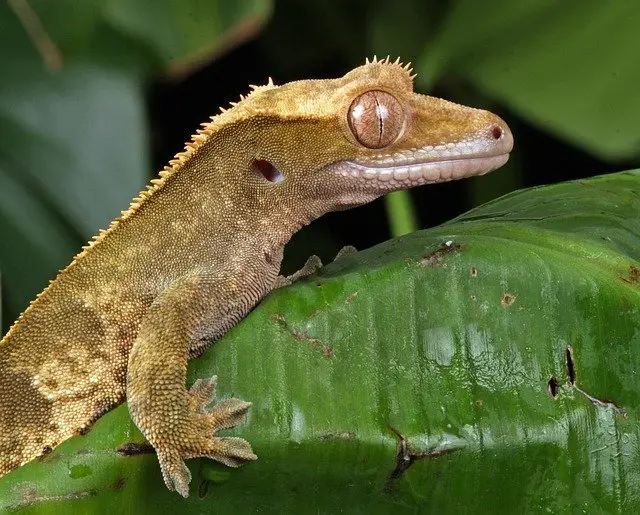Geckos are one of the most popular lizards kept at home as pets and are considered exceptionally personable and easy to maintain. So if you have a crested gecko at home and are looking to get another one or multiple ones because they’re adorable- you’re probably wondering: Can crested geckos live together?
The short answer is that two geckos can be housed together, but only if you adhere to specific guidelines regarding their gender, size, and factors. Why? Read on and find out.
Do crested geckos usually live together?
Well, usually, in the wild, crested geckos are pretty solitary animals. They are arboreal, which means that they live on trees. They only spend time in another gecko’s presence to mate. Females don’t need to be around males while caring for the young ones.
Keeping this in mind, geckos can live together if you’re careful and follow specific guidelines.
Can two male crested geckos live together?
Never house multiple male crested geckos in one tank or habitat. They can get territorial and fight each other to defend and establish their territories and boundaries.
Can multiple female crested geckos live together?
One of the only ways to peacefully house multiple geckos in one habitat, without risking any fights from breaking out and causing an injury or uncontrolled breeding, is to house female crested geckos together. They are not territorial by nature and will not try to establish a hierarchy- or matriarchy as is the case. Instead, they are highly social and tolerant of their sister geckos. You can house up to 5 geckos, depending on the enclosure size.
Can one Male and one Female Crested Gecko live together?
While it might be tempting to play out your very own gecko-version of Virtual Villagers, keeping one Male and one female of the species is not advisable as the Male will try to breed with the female, often chasing it around the enclosure. Subsequently, you will have to deal with the definite possibility (oxymoron?) of crested gecko hatchlings.
Can one Male and multiple female geckos live together?
If you must, you can place one male gecko with multiple female geckos, but again, be ready for many gecko babies. The ideal ratio would be one Male to two-four females.
Can multiple males and one female crested gecko live together?
You guessed it. This is the worst possible way to house your geckos. All the males will become highly territorial, get into fights to establish dominance and hierarchy, and constantly try to breed with the poor female gecko. As a result, your female gecko’s lifespan will decrease, as will her health.
What about the baby geckos?
You can keep babies in the same habitat, but remember to separate them as they age and reach sexual maturity.
Keep an eye out for diseases.
This is a no-brainer. Like with most other animals, when you house two or more of them in a shared space, there is an increased chance of spreading disease and infections as they will most certainly be in close contact.
It is essential to keep an eye out and regularly check their health. Keeping the enclosure clean and replacing their water and food frequently will help to keep them clean and healthy.
If you notice any signs that your gecko might be sick, if one or more of them is looking peaky, immediately quarantine the affected geckos, and then take them to your vet to get them checked out and for treatment.
Some valuable tips to keep in mind when housing crested geckos together
- Make sure to only house geckos more or less the same size. If you house a small one with a larger crested gecko, you’ll have a very bullied and stressed-out lizard, especially if they are males (as specified earlier, you should remember not to house together).
- Make sure their enclosure is large enough to fit their numbers and size, with plenty of room to move and exercise without having to trip over each other. Lizards need their space, too, you know.
- You should avoid different housing species of geckos, irrespective of their sex. For example, keep only crested geckos together in one tank and another species in another. This is because not all geckos come from similar habitats, and the requirements of one species will vary significantly from another species’ needs.
- For example, the crested gecko is arboreal and originally comes from the island country of New Caledonia, specifically Grand Terre and the Isle of Pines, in the southern region. In contrast, the leopard gecko is a ground-dwelling lizard found in the rocky or desert terrains of Afghanistan, Pakistan, or northwest India. As such, it will need a different habitat inside its dwelling.




